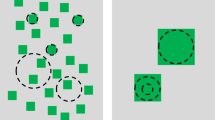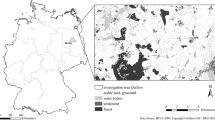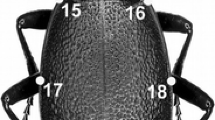Abstract
This article outlines a procedure for developing guilds for use in habitat assessment studies. It is based on a matrix constructed around layers of vegetation and other physical features of the environment used by vertebrate species for feeding and breeding. Modifications to permit inclusion of other life requirements such as cover are discussed. Examples are used to illustrate how species are assigned to guild cells based on their use of habitat, and how the association between a species and its environment does not have to be direct to influence the species' placement within the matrix.
Similar content being viewed by others
Literature cited
Bent, A. C. 1968. Life histories of North American birds (20 volume series reprinted). Dover Publications, New York, New York.
Chapman, J. A., and G. A. Feldhamer. 1982. Wild mammals of North America. Johns Hopkins Press, Baltimore, Maryland, 1147 pp.
DeGraaf, R. M., and D. D. Rudis. 1986. New England wild-life: habitat, natural history, and distribution. GTR NE-108. US Forest Service, Northeastern Experiment Station, Amherst, Massachusetts, 491 pp.
DeGraaf, R. M., N. G. Tilghman, S. H. Anderson. 1985. Foraging guilds of North American birds.Environmental Management 9:493–536.
Harrison, H. H. 1975. A field guide to birds' nests. Houghton Mifflin, Boston, Massachusetts, 257 pp.
Kahl, R. B., T. S. Baskett, J. A. Ellis, and J. N. Burroughs. 1981. Habitat characteristics of selected nongame birds breeding in Missouri. Missouri Department of Conservation, Columbia, 341 pp.
LeGrand, H. E., Jr., and P. B. Hamel. 1980. Bird-habitat associations on southeastern forest lands. Department of Zoology, Clemson University, Clemson, South Carolina, 276 pp.
O'Neil, L. J., and H. K. Gray. 1986. Status and source of habitat models and literature reviews December 1984 (revised February 1986). IR EL-85-3, Sec. 6a, US Army Engineer Waterways Experiment Station, Vicksburg, Mississippi, 13 pp.
Short, H. L., and K. P. Burnham. 1982. Techniques for structuring wildlife guilds to evaluate impacts on wildlife communities. Special Scientific Report, Wildlife no. 244. US Fish and Wildlife Service, Washington, DC, 34 pp.
Thomas, J. W. (ed.). 1979. Wildlife habitats in managed forests: the Blue Mountains of Oregon and Washington. US Forest Service Agricultural Handbook no. 553, 512 pp.
US Fish and Wildlife Service. 1980. Habitat evaluation procedures. 102 Ecological Services Manual. US Fish and Wildlife Service, Washington, DC.
Verner, J. 1984. The guild concept applied to management of bird populations.Environmental Management 8:1–14.
Verner, J., and A. S. Boss. 1980. California wildlife and their habitats: western Sierra Nevada. GTR PSW-37. US Forest Service, Pacific Southwest Forest and Range Experiment Station, Berkeley, California, 439 pp.
Author information
Authors and Affiliations
Rights and permissions
About this article
Cite this article
Roberts, T.H. Construction of guilds for habitat assessment. Environmental Management 11, 473–477 (1987). https://doi.org/10.1007/BF01867655
Issue Date:
DOI: https://doi.org/10.1007/BF01867655




